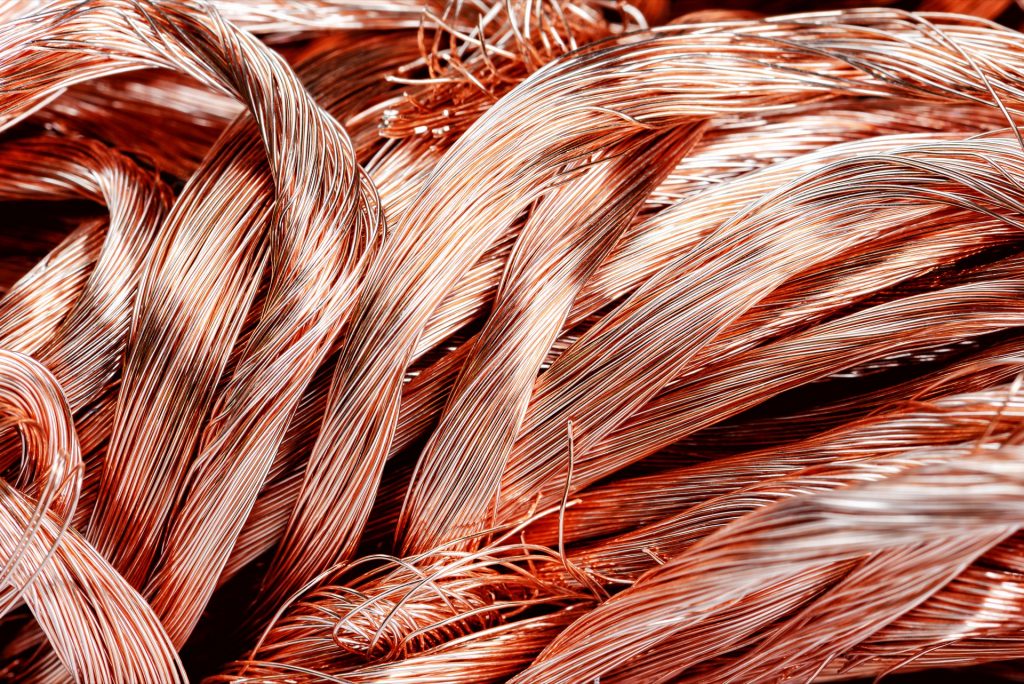When looking at different metals, ferrous and non-ferrous labels appear frequently. Due to this we often stumble upon the question, What is the difference between ferrous and non-ferrous metals?
The most common deferentiation among the two depends on whether a metal has iron in it or not. Ferrous metals contain iron, while non-ferrous metals do not. The two types of metals also have distinctive characteristics that go beyond just iron. That is what makes certain metals suitable for specific applications over others. Below is a closer look at those defining characteristics, and examples of each type of metal.
What are Ferrous Metals?
They are mostly known for their overall strength and contain iron, making them useable for anything that requires strength and durability over the long run. For that reason, the architectural and construction industries rely on them frequently. This makes ferrous metals an excellent choice for many building projects, providing structural stability that can be counted on.
Ferrous metals also have a high carbon content, which can lead to rust in certain conditions. Stainless steel and wrought iron are the only ferrous metals that resist rust over long periods of time (providing the coating stays intact). Stainless steel has the ability to do so because of the chromium in it, while wrought iron has enough pure iron to fight off the rust.
These metals are also magnetic, which makes them useful for a variety of purposes. For example, common practical applications of magnets are motors, electrical parts, and magnetic resonance imaging (MRI) machines.
The most common ferrous metals are most commonly identified as a type of steel or a type of iron. Slight differences make certain materials better than others for specific applications.
Examples of Ferrous Metals
Steel
Used mostly in construction and manufacturing, steel is one of the most versatile metals out there. It’s very tough and durable, especially when combined with one or more select non-ferrous metals to form an alloy.
Carbon steel, a common alloy, is a harder metal because of higher carbon content, while steel alloy has increased strength and durability because of the added chromium, titanium, and nickel. Look for carbon steel in any type of tool. It can stay extremely sharp, and its hardness provides amazing durability. Since alloy steel is a little lighter, it’s used in applications where weight can make an impact on the final product or result. Easily the most popular steel alloy is stainless steel, which is used in a wide variety of applications like utensils, sinks, and finishes.
Iron
Cast iron and wrought iron are the two main types of iron. Cast iron is hard and brittle, with long-lasting durability. Wrought iron, which is very close to pure iron, doesn’t have the same level of hardness, but it still has plenty of uses.
Cast iron is put most commonly into use where other metals can’t endure the stress of the application. This includes components like pipes, machines, and engines which all rely heavily on the metal. As for wrought iron, it’s malleable enough to be used in fencing, nails, and chains.
What are Non-Ferrous Metals?
Metals that don’t have iron in them are non-ferrous, and they provide their own set of benefits. For starters, these metals are much more resistant to corrosion compared to ferrous metals. The iron in ferrous metals causes corrosion problems over time. Non-ferrous metals are also malleable and fairly lightweight, which makes them perfect for anything that relies on speed and/or flight.
Non-ferrous metals appear frequently in industrial and residential settings. Metals such as aluminum and copper make appearances around the home or business for gutter, roofing and electrical work.
Examples of Non-Ferrous Metals
Aluminum
This is an extremely lightweight, soft metal that has many applications. The one drawback is its relatively low strength, which limits it somewhat as a standalone metal.
Lead
For a heavier non-ferrous metal, lead certainly fits the bill. It’s soft and malleable, and can resist corrosion very well. It has a variety of uses, ranging from electrical cables to batteries.
Tin
Similar in some ways to aluminum, tin is an excellent choice as a coating for steel. Since it helps prevent corrosion without adding weight, it can be applied as a coating for other metals as well.
Copper
Most people think of wires and conductors when they hear about copper because of its broad use in electrical components. However, it’s also an element in creating brass (another useful material) which has its own set of applications, notably in musical instruments and plumbing.
Have any questions, or want to learn more about finding the perfect metal?

